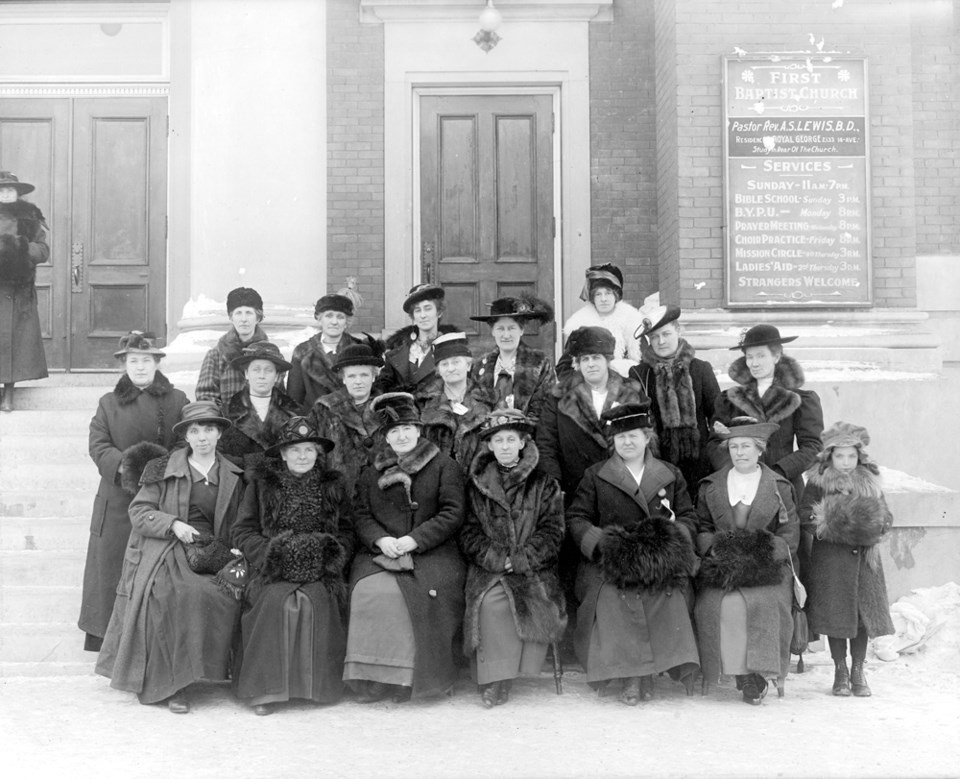The Humboldt and District Museum and Gallery are celebrating the fight.
With 2016 being the 100th anniversary of women winning the right to vote in Saskatchewan, the suffrage exhibit is telling a uniquely Saskatchewan story of a problem that covered the western world.
But that fight is even more relevant today than it was 100 years ago, says Terresa Ann DeMong with the Diefenbaker Canada Centre in Saskatoon who designed the exhibit which opened in 2016.
“It’s interesting to see that two years later (since the exhibit opened) it’s not only still relevant but perhaps even more relevant to look back on a century of work women put into ensuring that their voice is heard,” says DeMong.
The suffrage movement originated in American and British movements where women were literally fighting for their right to go to the polls after peaceful movements failed to bring any action from parliament.
Saskatchewan, Alberta, and Manitoba were the first provinces to start the movement in Canada and the first ones to gain the right to vote for women, Saskatchewan specifically on March 14, 1916, says Christian Pollock with the Diefenbaker Centre.
The general opinion at the time was that women should only occupy the private sphere of society which excluded political discussion, did not have the intelligence to join the discussion, and would only vote the same as their husbands, says Pollock.
“Really what changed that was a number of different things. One of them was the first world war forced society to allow women in different roles and became more of a norm.”
While the Canadian movements were more subdued than British and American movements, “they were just as determined,” says the Diefenbaker Centre booklet.
“In Saskatchewan, a province heavily dependent on agriculture, co-operative organizations provided women many opportunities to take part in agrarian politics.”
The fact that women farmed next to their husbands and children meant that, “women were valuable partners in maintaining homesteads and assisting with manual labour,” says the boolet. Rural men were more likely to see their wives as equals when they were working side by side instead of at two different working environments, which was more common in the east, says Pollock.
Those within the realm of Saskatchewan politics also saw the movement as a way to increase their power and have a stronger voice in federal politics.
Rural women organizations, including the Saskatchewan Women Grain Growers’ Association created by suffragist Violet McNaughton, united women around the movement and gave them a voice, says DeMong.
“Those suffragists that we feature in this exhibit were ordinary individuals who had extraordinary opportunities to voice it and have others follow.”
Even with most women gaining the vote, there were some exclusions to the movement with first nation women and some immigrant and religious groups taking longer to gain the vote than others.
Suffrage was not the final step in the movement but one of the first with the suffrage movement being partially credited with Canada gaining socialized medicare, of course, which originated in Saskatchewan.
“They had a very big role in that because women’s healthcare was obviously very lacking at the time and they were able to get that rural healthcare that they needed,” says Pollock.
And Catherine Harrison of the Humboldt and District Museum knows there is still more to be done and that this exhibit should promote that, especially with recent women’s marches taking place across the world.
“It’s really important not to rest on our laurels realizing that women who have obtained positions (within) all those traditionally masculine professions...they’re still facing challenges.”
That dialogue is still taking place in Saskatchewan, especially with around 56 women having joined the legislative assembly since Saskatchewan’s creation, according to the Legislative Assembly of Saskatchewan page, Saskatchewan Women in Politics.
As the first female representative, Sarah Katherine Ramsland blazed the trail for the remaining women, becoming the first woman in the Legislature in 1919.
Currently, 16 women occupy the 61 seats in the legislature, one of which is Humboldt-Watrous MLA Donna Harpauer, who says we have to be mindful and grateful to those trailblazers who made society better and stronger.
“Because of the work they did, I have the privilege of feeling like I am a politician first and I just happen to be a woman second.”
Sisters United, Women’s Suffrage in Saskatchewan has been on tour thanks to the Defienbaker Centre of Saskatoon.




